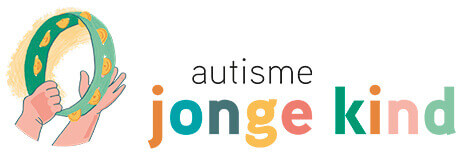
Step 1: Understanding autism (in your child)
When you hear that your child probably has autism (ASD), you will want to know how to deal with it. And how to encourage your child's development. In that case, it is important to first understand what autism is and how it manifests in young children. This will also help you better understand what autism looks like specifically in your child.
What is autism (ASD)?
The brains of people with autism work differently. They process information in a different way and that often leads to unexpected and unusual reactions.
From the outside, so from their behaviour, you see people with autism experience difficulties with
- Entering into and understanding social situations
- Communication
- Flexibility in behaviour or interests
- Motor stereotypies
On the inside, so at brain level, someone with autism processes information in greater detail. This comes at the expense of seeing coherences. This is why people with autism often have difficulty with:
- filtering important and less important information.
- processing information (takes more time).
- processing and applying new information (less flexible).
What these problems look like differs depending on the person, age and environment.
Characteristics of autism (ASD) in the young child
Characteristics of autism in young children are, for example:
- The need to keep the world predictable or the same.
- Getting upset by relatively small changes.
- Clinging to rituals or repetitions in play.
- Wanting to have things their way, or asking the same questions over and over again.
- Reacting more sensitively to environmental stimuli, or ignoring them completely.
- Difficulty adapting to new situations or transitions.
Different manifestations of autism (ASD) in young children
Autism manifests in different ways. Likewise, in young children. Below are some examples of these differences:
The child with autism who shuts him- or herself off from interaction
Children with autism prefer to play alone. This is partly to do with cutting themselves off from the many stimuli in a social environment. Often, this child prefers to play his/her own game. For example, this child will:
- play alone in a corner, while the other children play together.
- not react when someone says something to him or her.
- be more focused on play equipment than interaction.
- be less interested in play offered by another person, but follow his/her own interests.
- prefer to watch the play of others rather than participate in it.
The child with autism who is strongly focused on interaction
Some children, on the other hand, are very strongly focused on interacting with others. Their problem lies in the coordination of the interaction, so in taking the other person into account. For example, this child will:
- easily interact with strangers, but may ask inappropriate questions.
- make little distinction between strange and familiar people.
- become familiar with a stranger too quickly by, for example, immediately sitting on their lap.
- be eager to touch or cuddle other children (and miss signals that the other child does not want this).
- determine the game and tell other children what to do.
A language advantage or, on the contrary, a language deficiency
Some children with autism have a language advantage and use complex words. Yet, other children have a language deficit. They parrot (literally repeat), or do not speak (yet).
Always playing the same game or, on the contrary, being eager to learn
A child’s play can also vary greatly. Some children do the same thing over and over again. For example, they constantly line up toys, or sort them by colour or size. Other children are very inquisitive and, for instance, want to know everything about a certain subject.
Learning difficulties or, on the contrary, developmental advantages
Some children with autism may also have learning difficulties. There may be developmental delays. Yet, it is also possible that a child with autism has developmental advantages in certain areas.
Various problems that do not always occur
In addition, children with autism are more likely to have trouble eating, sleeping, potty training and in their motor skills. They are also more likely to throw tantrums, be disobedient and show busy or aggressive behaviour. But this need not always be the case.
Understanding what autism looks like in your child specifically
So, autism comes in all different shapes and sizes. And it can cause issues in various areas. That is why it is particularly important to map out your child's strengths, as well as the areas in which your child may need more guidance.
If your child has been diagnosed with autism, this offers merely general guidance. It is important to understand what autism looks like in your child specifically. This means you know what his or her talents are. But also what disabilities he or she has. Professionals can offer valuable help, so that together you can understand your child as fully as possible. From there, you can find solutions.


